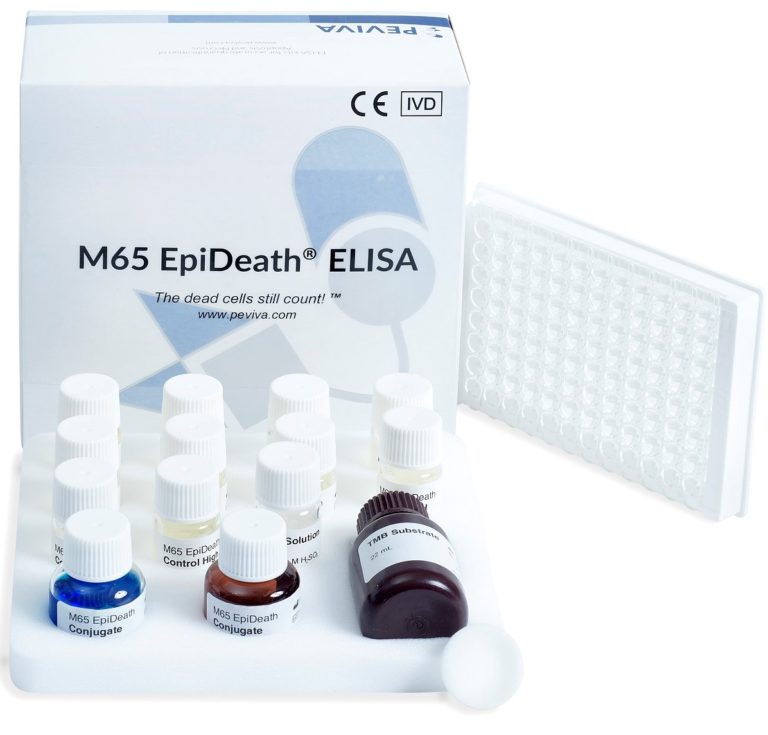For U.S. users: The VLVbio K18 assays have not been approved by the U.S. Food and Drug Administration
M65 EpiDeath® ELISA
Product no. 10040
The M65 EpiDeath® ELISA represents the next generation of K18 positive biomarker assays, and is CE marked as a medical device for in vitro diagnostic use.
General Information

M65 EPIDEATH® ELISA M65 EPIDEATH® ELISA M65 EPIDEATH® ELISA M65 EPIDEATH® ELISA M65 EPIDEATH® ELISA
Product characteristics
The M65 EpiDeath® ELISA measures the concentration of total soluble keratin 18 (K18) in human plasma, serum and cell culture supernatants. The K18 levels reflect the amount of total cell death, due to apoptosis or necrosis of epithelial cells.
Assay type: Sandwich ELISA , 96-wells, ready-to-use. Pre-coated microplate (12 x 8 well strips)
Sample type: Human serum and plasma, Human cell cultures
Assay time: 4 hours
Storage instructions: Store at 2-8 °C
Species reactivity: Reacts with Human
Assay Procedure
Assay Procedure of M65 EpiDeath® ELISA

Application Fields
Hepatology
The M65 EpiDeath® ELISA measures the amount of total hepatocyte cell death in patients with liver damage
Toxicology
Detecting potential hepatotoxicity is crucial during drug development and drug safety testing in order to reduce the risk of late drug candidate withdrawal. The M65 EpiDeath® ELISA can be used to detect Drug-Induced Liver Injury in clinics and during drug development.
M65 EpiDeath® ELISA in

CLINICAL APPLICATION
Drug-Induced Liver Injury
Drug-Induced Liver Injury (DILI) is one of the most common reason for acute liver failure and a condition that may require liver transplantation and in some cases even has fatal outcomes. Today, DILI has implications in both the development of new drugs and in clinics due to toxicity of existing drugs on the market.
Many drugs, e.g. acetaminophen, statins and anti-infective substances, have toxic effects when administered in wrong doses. As a result, DILI is a leading cause of drug withdrawal from the market. Furthermore, acetaminophen overdose is a common reason for hospitalization and the most frequent cause of hepatotoxicity, showing a high morbidity and mortality.

